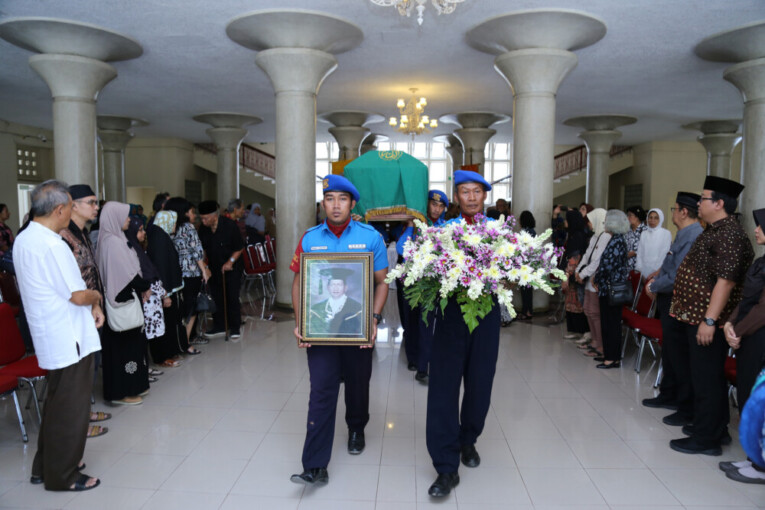
Recently, there have been swamp cities in Indonesia that experience degradation. The degradation is caused by the utilisation of such cities as part of development.
“Several issues that happen are utilisation of rivers as waste disposal area, the backyard of development orientation, and river closure for settlement and lands,” said Irwan Yudha Hadinata, on Friday (8/9) in his doctoral promotion at Faculty of Engineering, Universitas Gadjah Mada (UGM).
The lecturer from Universitas Lambung Mangkurat defending his dissertation entitled Transformation of Swamp City of Banjarmasin. His promoters are Prof. Ir. Bakti Setiawa, M.A., Ph.D., and Dr. Ir. Budi Prayitno, M.Eng.
Irwan said the general problems are due to the views on development that is land based that is situated on river-swamps, also unavailability of reference or concept and research that can direct development towards swamp context.
Further Irwan said that the swamp city of Banjarmasin has similar problems with others in Indonesia. Banjarmasin, however, has the biggest complexities among other cities in the south part of Kalimantan.
“The problem of swamp city of Banjarmasin is about orientation, transportation, and area development methods,” he said.
His research showed that there are four transformation themes in Banjarmasin, namely spatial transformation, network transformation, element transformation, and shape transformation. Banjarmasin is formed of process of spatial and element interdependence in the existence and competition theme. This process involves competitive relations of seven elements, which are rivers, canal-road, brook, road, mosque, market, and port towards three spatial themes, namely river, canal, and swamp.
This interdependence process happens in four main eras in the formation of Banjarmasin city with the dominance of economic and cultural factors. Economic accesability is the main economic factor that is dominant to explain why and how the city of Banjarmasin had changed rapidly.
Irwan recommended the master plan of water related mechanism. The masterplan related to spatial and element needs to be considered remembering that Banjarmasin has spatial and element interdependence characteristics.
“To meet future challenges, Banjarmasin city needs to re-affirm the delineation of riverside areas that cannot be eliminated, normalised, or changed into a new function,” he said.


